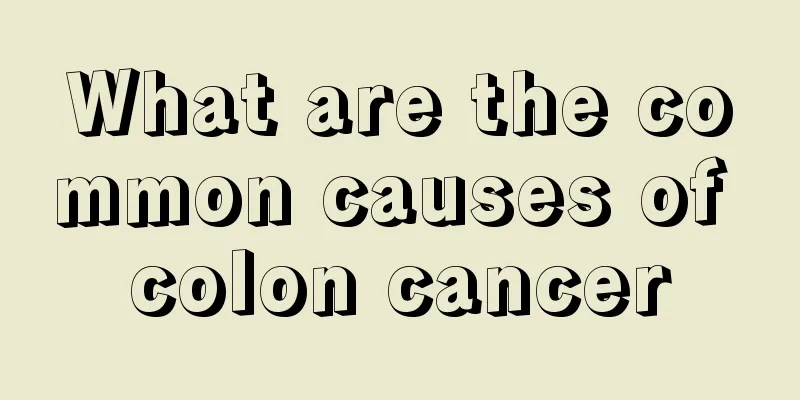What are the symptoms of lung cancer at different stages? Typical clinical symptoms of lung cancer

|
Lung cancer is a disease that has a very serious impact and harm on people to a certain extent, so it is one of the diseases that cannot be ignored. There are three different stages of lung cancer, and the symptoms of each stage are also different. It is necessary for everyone to understand it. Let us introduce it to you in detail. Early symptoms of lung cancer include cough, hemoptysis, chest and back pain, wheezing, and unexplained fever. Lung cancer is a malignant tumor that occurs in the respiratory organ lungs, and the symptoms are closely related to the location where it occurs. Generally speaking, lung cancer is divided into central lung cancer and peripheral lung cancer. Central lung cancer generally presents symptoms slightly earlier because it occurs in the main bronchi, and cough, blood in sputum, or chest discomfort appear earlier. When the peripheral type is discovered, once the tumor accumulates to the pleura, there may be changes in chest pain. If it develops further, pleural lesions will occur and pleural effusion will occur. In addition, arthritis will occur, often coexisting with clubbing. It manifests as migratory arthritis symptoms, burning pain in the elbows, knees, wrists, ankles, and metacarpophalangeal joints, and movement disorders. In general, cough is the easiest to ignore among the early symptoms, because many bronchial diseases and lung diseases are initially manifested as cough. Cough may be caused by a cold or air pollution, but cough is also often one of the important symptoms of lung cancer, which must be made clear. The symptoms of advanced lung cancer are more obvious and complex than those of early lung cancer. The most common symptom is hoarseness. The main reason is that the tumor invades the left side of the mediastinum, compressing the recurrent laryngeal nerve, resulting in hoarseness, but without sore throat and other symptoms of upper respiratory tract infection. In addition, shortness of breath and pleural effusion are also one of the symptoms of advanced lung cancer. Almost all patients with advanced lung cancer that have spread regionally have shortness of breath to varying degrees. When lymph nodes are blocked by tumors, these tissue fluids will accumulate in the pericardium to form pericardial effusion or accumulate in the chest cavity to form pleural effusion, causing shortness of breath. There is also edema of the face and neck. There is a superior vena cava on the right side of the mediastinum, which transports venous blood from the upper limbs and head and neck back to the heart. If the tumor invades the right side of the mediastinum and compresses the superior vena cava, it will initially cause the jugular vein to distend due to poor reflux, and eventually lead to edema of the face and neck, which needs to be diagnosed and treated in time. The symptoms of lung cancer patients before death are basically all kinds of internal and external physiological manifestations caused by the lung cancer virus, which are in a prominent state. The first is the mass, which is formed by the malignant proliferation of cancer cells. It can be touched on the surface or deep inside the body. The tumor metastasizes to the lymph nodes, which can cause lymph node enlargement. Some superficial lymph nodes, such as cervical lymph nodes and axillary lymph nodes, are easy to touch. The second is pain. Severe pain is a symptom of lung cancer before death in the late stage. Pain is generally caused by cancer cells invading the nerves. Many people feel extremely painful in the late stage, and even taking medicine is ineffective. The next is ulcers, which are caused by the rapid growth of cancerous tissues of some surface cancers, insufficient nutrition supply, and tissue necrosis. They secrete bloody secretions, and may have a foul odor when complicated by infection. In addition, stomach and colon cancers can also form ulcers, but they can generally only be observed through gastroscopy and colonoscopy. The last obvious symptom is bleeding, which is caused by cancerous tissue invading blood vessels or rupture of small blood vessels in cancerous tissue. For example, lung cancer patients may cough up blood and have blood in their sputum. If lung cancer is not treated and controlled in time, the above symptoms of late-stage lung cancer will appear, making it unbearable for patients. |
Recommend
How to identify whether jade is real or fake
Jade has been loved by people since ancient times...
What's the matter with the pain in the right solar plexus
What is the cause of the pain in the right solar ...
What is the reason for coughing when drinking water?
Coughing and choking is a very common phenomenon ...
How to check for gastric cancer? Mainly through gastroscopy
If gastric cancer is suspected, we first need to ...
There are small white worms on the grapes
Many people like to eat grapes because they are n...
How to remove the smell of onions?
When it’s time for dinner, we eat some vegetables...
5 measures to prevent bladder cancer Dietary considerations for bladder cancer
Bladder cancer is a very serious disease. In our ...
Where is the best hospital for pituitary tumor treatment
We have seen many diseases in our lives, among wh...
Regular massage of the three major acupoints is the best for nourishing the liver
The liver is the largest detoxification organ in ...
If you are diagnosed with advanced cancer, you should be aware of 4 things to avoid affecting your survival period
When patients are diagnosed with cancer, especial...
What are the characteristics of bloodshot nasal discharge from nasopharyngeal carcinoma and what are the treatments?
Nasopharyngeal carcinoma is already a common dise...
Who can't practice leg lifting exercises
Nowadays, we often hear various reports suggestin...
What diseases can be treated with electroconvulsive therapy?
Electroconvulsive therapy is also known as electr...
Can children's shower gel be used to wash hair?
Both shower gel and shampoo have a cleansing func...
What causes myocarditis and what should you pay attention to
Myocarditis is an inflammatory disease of the myo...









